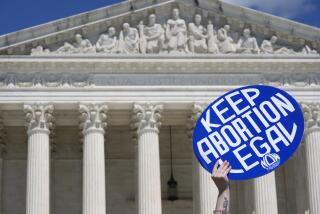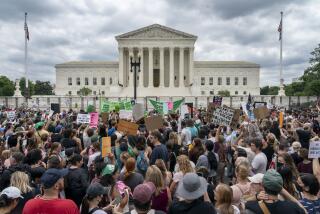More Women Choose Prophylactic Mastectomy
- Share via
The choice to remove a healthy breast in order to avoid breast cancer is a deeply personal decision that appears to be on the upswing in one group of women, according to a study published today in the journal Cancer.
Among women who had cancer in one breast, the number who opted to have the other breast removed, called contralateral prophylactic mastectomy, increased from 1995 to 2005 in New York state. During the same time period, however, the number of healthy women who chose to have a prophylactic mastectomy of both breasts because of a higher-than-average risk of developing cancer held steady. The research is among the first to examine the choice of prophylactic mastectomy among women who did have cancer.
“We have about 100 women a year in New York who have prophylactic mastectomy without breast cancer,” said the lead author of the study, Dr. Stephen B. Edge, a professor of surgery and oncology at Roswell Park Cancer Institute in Buffalo, N.Y. “That number hasn’t changed despite the press coverage this subject gets and despite gene testing.”
The practice of removing breasts to avoid cancer is most common among women with a strong family history of the disease and who test positive for the BRCA-1 or BRCA-2 gene mutation.
But, Edge says, there are no data “to demonstrate that having the prophylactic mastectomy actually improves your survival.”
High-risk women considering this option should be evaluated by a multi-disciplinary team including a genetic counselor, he said.
Likewise, there is little evidence to support the recommendation that women with cancer in one breast have the healthy breast removed to improve survival. Yet the study found almost 5,000 New York women chose a contralateral prophylactic mastectomy during the 11-year period, with the number more than doubling from 1995 to 2005.
“It really increased dramatically,” Edge said. “We are not making a value judgment that it is good or bad. But it’s an important trend. . .The concern is that we have women doing this out of a gut reaction. No one is really counseling women in detail about their risk. They have a 10% to 15% chance of developing cancer in the other breast in 20 years. Most likely that cancer would be detected at a very early age. So does it warrant having the breast removed?” The National Comprehensive Cancer Network, an alliance of top cancer centers, offers detailed guidelines about breast cancer treatment but offers little information on the option of bilateral prophylactic mastectomy, Edge said, perhaps leaving doctors and women with a lack of resources with which to base a decision.
The new study mirrors research published in 2007 that also found an increase in women nationwide, especially white women and younger women, choosing contralateral mastectomy.
“We’re not exactly certain why we’re seeing this trend,” said Dr. Todd M. Tuttle, chief of the division of surgical oncology at the University of Minnesota and the author of the 2007 study. “One reason is that there is increased awareness of genetic risk and of gene testing. There has also been a marked improvement in mastectomy techniques and breast reconstruction techniques in the past decade in the United States.”
But the trend also coincides with an increase in women who are choosing mastectomy instead of having a less-invasive lumpectomy to remove a breast tumor, Tuttle said.
“It’s an oddity,” Tuttle said. “Throughout surgery, there is such a huge push to do procedures that have less scarring, the shortest surgery, the shortest recovery. That is true for everything except breast cancer.”






